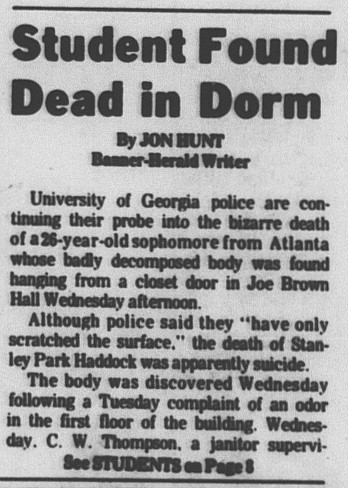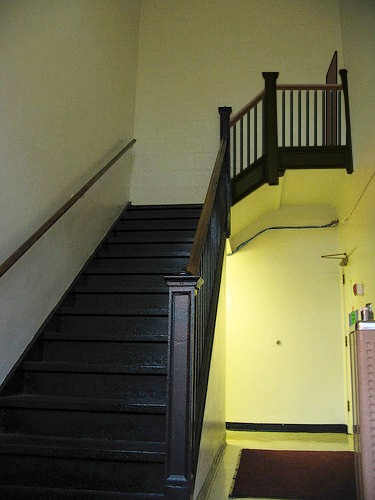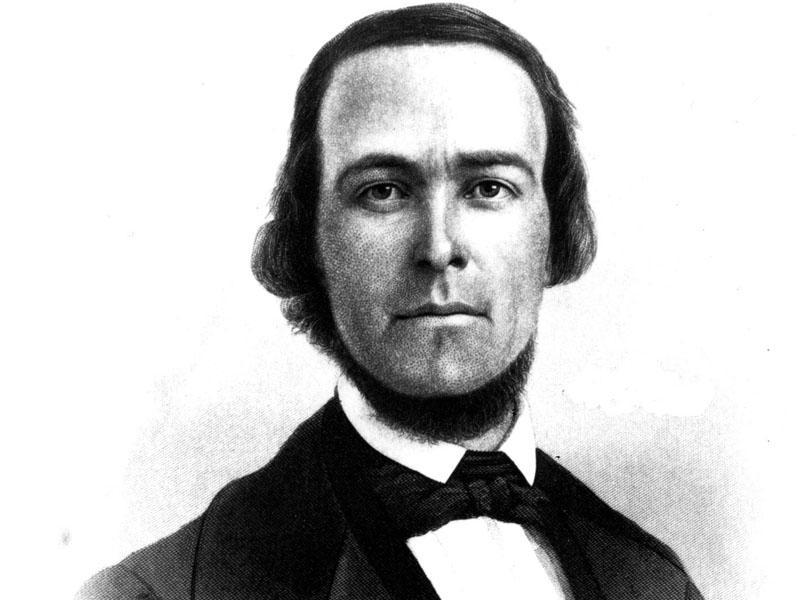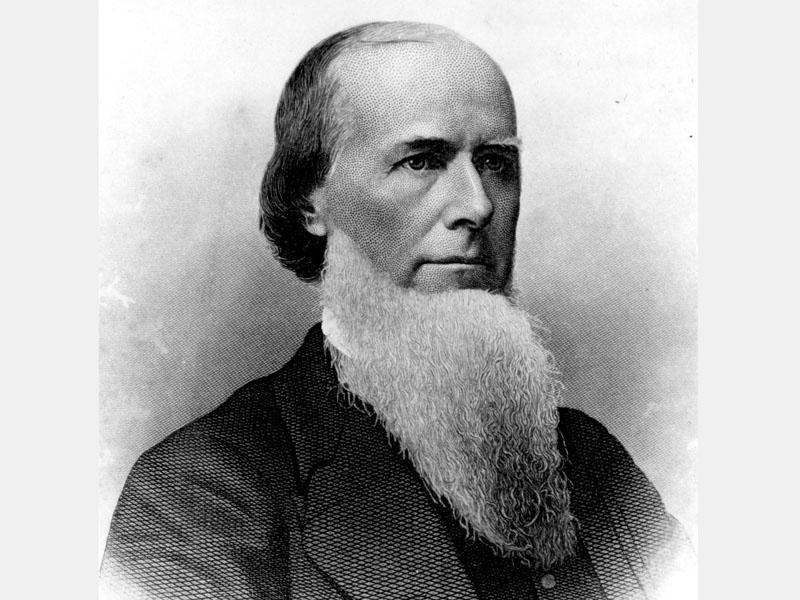Joe Brown Hall
Joe Brown Hall was constructed in 1932 and named after Joseph Emerson Brown. Joseph E. Brown was an attorney and politician who served as the 42nd governor of Georgia. He was a secessionist who leads Georgia into the Confederacy in 1861. After Reconstruction ended, Brown rejoined the Democratic Party. He was elected to the U.S. Senate in 1880 by the state legislature. Brown became the first Democratic Party official in Georgia to support public education for all children, which is why a dorm hall was named after him. The Republican Reconstruction-era legislature was the first to establish public education in the state but the succeeding post-Reconstruction, white-dominated legislature abandoned it. Brown recommended that railroad fees be used to support it financially. Prior to this, only the elite who could afford tutors or private academies had their children formally educated.

The Red and Black's front page on March 2nd, 1972

Closer image of the front page of The Red and Black, focusing in on Haddock's death

Coverage of the death within The Red and Black

The staircase that leads to nowhere in Joe Brown Hall
Joe Brown Hall was once a student dorm. However, after the 1971 Thanksgiving break, 26-year-old UGA student Stanley Park Haddock from Atlanta was found dead. Haddock committed suicided by hanging himself from his dorm closet. The UGA police confirmed a severely decayed body and called the death "bizarre" as the body was wearing only a t-shirt and nothing else. The report noted that in another suggestion that his suicide may not have been planned far in advance as an unopened bag of donuts from a local bakery was found near his body. His body was discovered after the holidays when students living in Joe Brown came back to an unbearable stench. This is how the police found his remains. After complaining about the stench that refused to go away, the school decided to board up the wing in which Haddock’s body was found. This is why Joe Brown Hall now has a staircase that leads to nowhere. Joe Brown eventually stopped being used as a student dormitory, beginning the additions of new dorm halls and eventually, the housing crunch.
Works Cited
Hunt, Jon. “Body Found in Joe Brown Hall.” Georgia Historic Newspapers, Digital Library of Georgia, 16 Mar. 2007, gahistoricnewspapers.galileo.usg.edu/search/pages/results/?proxtext=The+Red+and+Black+1972&page=28&sort=date_desc.
Knight, Lucian Lamar. Georgia's bi-centennial memoirs and memories, V. 2 p. 51, Hargrett Rare Book and Manuscript Library, University of Georgia Libraries, Athens, GA. "Joseph E. Brown." New Georgia Encyclopedia (Project). Date Not Provided, http://georgiaencyclopedia.org/file/11129.
Not Available. "Joseph E. Brown." New Georgia Encyclopedia (Project). Date Not Provided, http://georgiaencyclopedia.org/file/11140.

